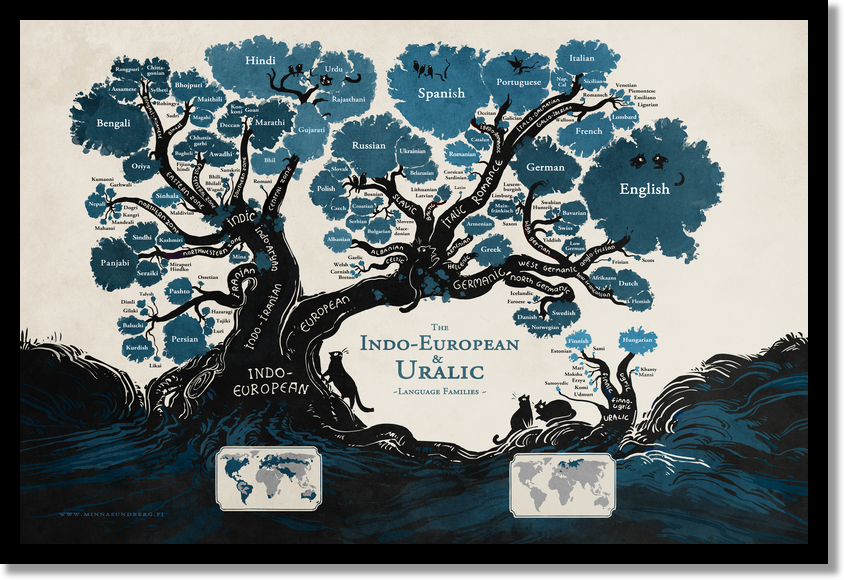Mankind emerged about 300,000 years ago, in a very short period of time, from using stone tools to advancing technology space, so how did this happen? Why aren’t other animals trying to do gene engineering, nuclear weapons and philosophy?
The process in which humanity develops technologically is very short in terms of biological evolution, therefore it should be another evolutionary process and information carrier. The name of the new evolutionary process is Cultural Evolution and information carrier is Mem.
Mem is derived from the Greek word “Mimeme” and means what is imitated. It includes ideas, clothing fashions, car making, poems, recipes etc. cultural knowledge. Genes are encoded in DNA and Memes are encoded in human brain, books, pictures, etc.
“Self-rupture” is a very important feature. Genes copy themselves with biological mechanisms, memes with imitation. Especially we unconsciously imitate our parents and people who are familiar enough. Imitation is inherent in human nature.
Memes copy themselves from brain to brain. Ideas can be more contagious than viruses. The birthday song is a mem virus in everyone’s brain. Mutations may occur in the copying process here, or may be selected if there is an idea that doesn’t suit you.
Algorithms are “substrate-neutral”, so the environment in which they work is not important, you can do the picking process with a paper pen or a computer.
Similarly, the mutation and selection algorithm that operates on genes should also work on the new culture information unit.
Memes also evolve

Culture is alive and evolving and changing. The middle-age English poet cannot chat with a modern poet. These hard-to-understand people have been raised by chained English-speaking parents for 20 generations. Language and culture are moving thousands of times faster than biological evolution.
Clothing, ceremonies, traditions, art, architecture, engineering and technology are formed by accelerated evolution
When we look at the language tree, it has a structure similar to the tree of life. When an animal species is extinct, millions of pages are deleted from the genetic library in such a way that it cannot be replaced by a certain part of the language.
Are we different?

When we ask people what makes people different from animals, we realize that talents such as love, memory, attention, curiosity, intelligence, and trade are also in animals, the difference here is not quality but quantity.
The first feature that comes to our mind is culture, in fact, there are culture-like structures in animals, but they cannot compete with what man creates.
For example, an animal species can learn from around by observing and imitating information such as which fruits are poisonous, how to crack nuts.
But, like humans, they do not have the chance to transfer this information to the next generations, and when they die, they die in memes, and in this process, genes can be transferred.
In humans, the information accumulated throughout life is stocked with books or language, put on top of each other and eventually we reach an increasingly large pool of information.
In small human populations, culture can go back.In this process, biological evolution has helped cultural evolution, a specialized soundbox to speak, and an advanced brain is required to process other information.
Collective learning and creativity

Nobody in the world knows how to make a pencil, which seems very simple, even those who work in its factory. They are unlikely to know how to dig mines for grafen or plastic.
This actually shows us the necessity and power of collective learning. One of the reasons why human culture is so effective is collective learning. Everyone makes a small contribution and creates a network on a world scale.
Human creativity is a process of change and unification. Ideas can be combined or changed in the human mind. This process can be considered as sexual reproduction at the level of knowledge. Then the person can explain the mem units that he has developed to someone else and the cycle continues in this way.
Mem vs Gene
Memes help build culture. When humanity gradually begins to accumulate knowledge, it gains the power to change its environment. Genes try to adapt to this rapid environment change, but they cannot catch it after a point.

It was noteworthy why moths or butterflies hit the glass or gather around the light produced by humanity.The moths cannot understand what the glass is, and it mixes the light with the moonlight it uses for navigation, a very rapid change for the gene.
Similar processes experienced by moths may also apply to humans, especially in terms of nutrition and lifestyle.
While genes transfer themselves in the vertical plane, memes are more likely to be copied horizontally.
Memes have a higher mutation rate, it can be seen that the word is highly distorted if you have played word of mouth.
We do not have enough information to answer questions such as the whole culture or how language emerged, but the new way of thinking makes the problem simpler.
Beyond infinity and mem
When you look at people who have changed the Earth, there is nothing special in their genetics: Socrates, Leonardo, Copernicus, and Einstein are the genes they leave to the Earth that make them special.Your genetic heritage is assimilated in the common gene pool at an exponential rate. It should look for memes, not genes that want to seek immortality.
As a result:
- Ideas copy itself from brain to brain.
- Algorithms can run in many different environments Simple algorithmic processes starting from different points can lead to very different and mixed results.
- Bullet and time etching do not work on ideas (mem).
— Source —
https://www.dr.com.tr/Kitap/Mem-Makinesi/Bilim/Populer-Bilim/urunno=0000000373886
Yazar

Ömer Özgür
AI TEAM
